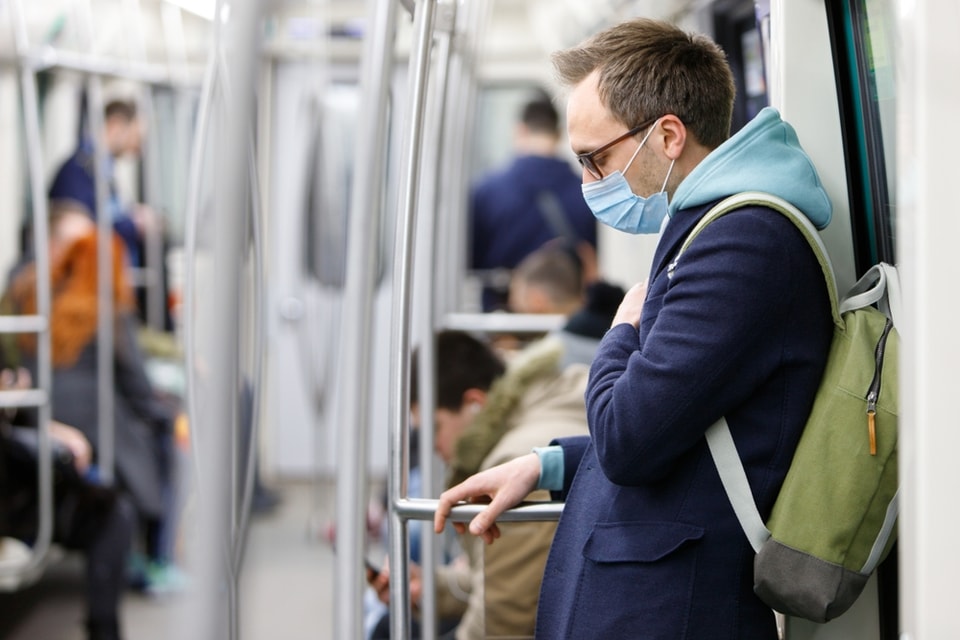Memo Published April 6, 2020 · 18 minute read
CoronaCare for Everyone: A Comprehensive Plan to Rescue Health Care
Kaitlin Hunter, David Kendall, & Gabe Horwitz

Takeaways
Coronavirus is our nation’s biggest challenge since 9/11. Yet we only have a patchwork of protections when it comes to securing our country’s public health. As Congress considers the next aid package, it needs to act on a massive scale. CoronaCare for Everyone is a comprehensive approach to the health crisis that will guarantee everyone gets tested and vaccinated, everyone gets proper coverage and treatment, and every frontline worker is protected.
The coronavirus (COVID-19) is putting unprecedented pressure on our nation’s health care system. As of this writing, thousands of Americans have died from COVID-19; over 190,000 cases are confirmed.1 As many as 240,000 Americans are projected to die.2 Hospitals across the country are overwhelmed as they face shortages of basic medical equipment and heartbreaking choices of which patients to give their limited resources. For each available ventilator, as many as 31 patients who can barely breathe may need it.3 Nine out of 10 US mayors say they do not have enough test kits and personal protective equipment for medical workers.4
It didn’t need to be this way. Despite the onslaught of public health experts asking for help, the Trump Administration has repeatedly failed to act. The President has contradicted experts, questioned the resources needed, and wavered on social distancing orders. Despite warnings from Chinese doctors and ample time to prepare, the United States didn’t produce or deploy enough tests, still doesn’t have enough masks or gloves for health care workers, and doesn’t have enough hospital beds and ventilators to save sick Americans. The results are already devastating and will only get worse.
Amid this crisis, Congress has thankfully taken swift, initial action by passing three large packages in March—all of which bolstered our public health resilience. The first package included $8.3 billion in emergency funding to develop testing, treatments, and a vaccine, as well as financial resources to the states and funding to buy critically-needed medical supplies.5 A second package expanded access to telehealth, required free testing, provided financial support for Medicaid, food assistance programs, community health centers, the supply chain, and it allowed labs to develop emergency testing for the virus.6 The latest emergency package included assistance to workers and industries as well as additional funding for the health care system.7
Congress took action that was essential for the public health and wellbeing of our country. But we still have a patchwork of protections. As Congress considers the next aid package, it needs to act on a massive scale.
CoronaCare for Everyone is a comprehensive approach to the health crisis that will guarantee everyone gets tested and vaccinated, everyone gets proper coverage and treatment, and every frontline worker is protected.
Here’s how to do that:
Guarantee everyone gets tested and vaccinated
- Test everyone with a massive public health works project and return people to normal life
- Ensure vaccines and treatment for all with expanded research and consumer incentives
Guarantee everyone gets proper coverage and treatment
- Guarantee free coronavirus care for all with a Medicare backstop for the uninsured
- Protect everyone’s coverage with auto-enrollment and COBRA reimbursement
- Increase the federal matching rate to state Medicaid programs
- Create an emergency supply chain for medical equipment with repurposed supply chains and a manufacturing czar
- Guarantee the most vulnerable have adequate food and housing with expanded SNAP and hotels for the homeless
Guarantee every frontline worker is protected
- Increase the number of health care workers, particularly in high-intensity areas
- Infuse $100 billion to rebuild the public health system infrastructure
- Create a 9/11-type fund to give hazard pay and free health care to all essential frontline workers
Guarantee everyone gets tested and vaccinated
1. Test everyone with a massive public health works project and return people to normal life.
While coronavirus seems like an invisible enemy, it wouldn’t be that way if everyone was tested for the virus. Testing can reveal if people are spreading the virus before they have symptoms. It can also show if they have already been exposed to the virus, which means they probably won’t catch it again or infect anyone after they recover based on initial research.8 That’s why testing everyone is the key to returning people to normal life, as Nobel economist Paul Roemer and physician/economist Alan Garber have pointed out.9
Congress needs to push the Administration to dramatically revamp the nation’s testing regimen. First, Congress should direct the FDA to prioritize approval of portable COVID-19 testing so Americans can quickly get tested for both current infection and immunity at a testing site rather than a hospital. Second, Congress should make sure the Administration guarantees the purchase of millions of new types of tests in order to stimulate production and ensure wide distribution. Third, it should authorize a massive public works project to hire unemployed workers for quick training and public health work in the field, ranging from temperature testing in public areas to helping process tests.10 Fourth, Congress should authorize small payments to patients to incentivize and pay them to upload their test results to the CDC for anonymous tracking that will allow officials to target resources and social distancing policies. Lastly, it should ensure people with immunity have a standard method for proving it, such as an app on a smart phone or an 800 number for employers to call to see which employees are cleared so they can go back to work.
2. Ensure vaccines and treatment for all with expanded research and consumer incentives.
In September 2019, the White House Council of Economic Advisors wrote a report on the catastrophic health and economic effects a flu pandemic would have on our country. They predicted the United States could experience up to $3.79 trillion in economic damage and up to half a million Americans dying in the most serious scenario. It also predicted that a large fraction of Americans would avoid work, crippling the US economy, infrastructure and defense sectors, and threatening national security. Yet, the White House ignored that report internally and publicly played down the severity of the threat to the United States.
If the Administration had followed the advice of its own report, it would have invested in private-public partnerships for new ways for vaccines to achieve large-scale, immediate immunization. Despite the lost time, Congress needs to step in. First, it needs to create public incentives to ensure private investment in improved vaccine technologies to address this and future pandemics.11 Second, Congress can’t let the Administration fail to act when a treatment or vaccine is available. It should enact strict guidelines for the deployment of treatment or vaccine so every American has access in under two weeks. Finally, the government should set up a COVID-19 vaccine fund to pay Americans that get the vaccine or pay insurers that provide incentives in their health plans to get the vaccine to incentivize uptake.
Guarantee everyone gets proper coverage and treatment
1. Guarantee free coronavirus care for all with a Medicare backstop.
The cost of COVID-19 testing and treatment will add to the crushing financial pressure facing millions of American families during this crisis. Many are already reeling from uncapped health care costs, and this crisis only exacerbates the problem. In fact, the average treatment costs will likely be more than $20,000 per patient.12 Without protection from those costs, people will be less likely to seek care and providers won’t be able to afford to deliver care to everyone, which will further spread the disease. Further, structural racism puts people of color at a greater risk during a pandemic like this one. During the H1N1 outbreak, Americans of color were more likely to experience hospitalization, and Hispanic and American Indian/Alaska Native people had higher H1N1-related mortality rates than whites. Due to urban crowding, a reliance on public transportation, no paid sick leave, language barriers, higher rates of chronic diseases, and mistrust of the health system, many people of color had increased exposure and delayed treatment.13 And this pandemic is no different. In Michigan, where 14.1% of the population is African American, African Americans make up 35% of the cases and 40% of the deaths.14
Because of that, all coronavirus care—testing and treatment—should be free to patients. First, Congress should stipulate that all forms health care coverage should exclude testing and treatment from deductibles, copayments, and co-insurance. The stipulation should follow the model for preventive care which is already free under current law.15 Second, for anyone who doesn’t have coverage, Congress should make Medicare a backstop coverage and allow providers to bill it for testing and treatment. Third, Congress should ban all surprise billing for all testing and treatment.16
Congress should also start to address health inequities by creating a national public COVID-19 clearinghouse with standards on COVID-19 data collection and reporting to gather demographic data on access to testing, treatment, outcomes data, symptoms, and mortality rates. Next, Congress should pay providers to input social determinants of health into electronic health records, allowing for the integration of medical and public health data. Finally, Congress should establish state-based equity hubs to connect Americans with unemployment insurance, health insurance, food assistance, utility assistance, and other social services to both support Americans and address disparities as they’re identified.17 Ideally, these hubs would work with or through electronic health records so clinicians know when a patient accesses social services and vice versa.
2. Protect everyone’s coverage with auto-enrollment and COBRA reimbursement.
Job losses threaten coverage for millions of Americans, and amid this public health crisis, people without any coverage need it more than ever. Medicaid and the ACA exchanges are providing critical bridge coverage for the unemployed, but switching coverage doesn’t make much sense for many employees who will hopefully return to their job this year. A program called COBRA allows laid-off workers to continue their coverage from a job without starting a new deductible and having to change doctors, but they must bear the full cost of that coverage, including what their employer was previously contributing, at a time when they are under financial distress.
Congress should protect and extend coverage to everyone in three ways. First, Department of Health and Human Services (HHS) should enable states to use unemployment insurance offices to automatically enroll individuals in the free exchange coverage, Medicaid, or COBRA. Second, unemployed workers should receive a tax credit for 100% of the cost of their COBRA coverage if they choose to use it.18 Third, small businesses should get help maintaining their coverage by allowing them to use the same tax credits that are available to individuals under the exchanges.19 Lastly, everyone, from the uninsured to the college students who have had to leave their university-based policies, should have an open enrollment period for currently available coverage in the exchanges and dependent coverage.20
3. Increase the federal matching rate to state Medicaid programs.
Medicaid is an essential federal-state program that provides health insurance to low-income people, people with disabilities, families and children, seniors, and pregnant women. For every dollar the state pays, the federal government matches somewhere between 50% and 77% of those costs. Under the ACA, states could expand their Medicaid program to cover adults with incomes just over the poverty level with a federal government matching rate of 100% initially, which fell to 90% after a phase-in period. And yet, even with this cost sharing, Medicaid is a huge part of state budgets. With COVID-19 requiring huge investments from states, many state budgets will be completely sapped dry—putting lives at risk.
To keep state budgets afloat, Congress should increase the federal medical assistance percentages (FMAP) to state Medicaid programs. Congress should increase FMAP by an additional four percentage points for regular Medicaid population for the next two years on top of the 6.2 percentage point increase, which was included in the second rescue package. (Ten percentage points is the increase Congress enacted during the Great Recession.) Congress should also increase FMAP to 100% for the expansion population of adults for the next two years. FMAP increases have proven to be economically beneficial.21
4. Create an emergency supply chain for medical equipment with repurposed supply chains and a manufacturing czar.
The specific, but voluminous, demands of the coronavirus have turned the supply chain for medical equipment and supplies upside down. After weeks of delays, the Administration has finally secured an agreement from Ford and GM to produce desperately needed ventilators to treat patients stricken with the virus.22 Yet, the Administration has decided not to deploy thousands of ventilators from the Pentagon.23 And that’s just one supply problem. While people across the federal government, state and local government, and the private sector are rallying to supply everything from masks to testing materials, the Trump Administration does not have a handle on all the needs and activity.
The nation needs to build emergency production resilience as the virus spreads. First, Congress should create a grant program or tax credit for American companies that repurpose their production lines for COVID-19 testing and treatment. Second, it should stop the Administration from implementing America First policies that further disrupt international supply chains. Third, Congress and the Administration should work together to set up a national manufacturing czar to coordinate across federal agencies as Rep. Elissa Slotkin (D-MI) has proposed.24
5. Guarantee the most vulnerable have adequate food and housing with expanded SNAP and hotels for the homeless.
Social distancing is critical to slowing the spread of the virus, however not everyone can safely do that. For example, homeless shelters are often at capacity; mandating that everyone be six feet apart means fewer people have a place to sleep at night.25 A parent that has a possible exposure, such as a nurse at a hospital, should have the option to isolate at a hotel so as not to risk infecting his or her family.26 Low-income people are more likely to live in homes with poor air quality, mold, asbestos, lead, pest infestations, and inadequate space to separate the sick from the healthy.27 Loneliness and social isolation are tied to medical risks like heart disease and diabetes, and an increased risk of alcohol and tobacco use.28 Stocking up on enough provisions and medicine to last at least a month is not a luxury most families can afford. Further, food assistance programs have limitations on what can be purchased using benefits that don’t make sense during this crisis. For example, SNAP cannot currently be used to purchase cleaning supplies, paper products, or hygiene items.
Everyone should have the ability to isolate safely from this virus through a suite of resources. First, the federal government should pay hotels across the country for access to empty rooms for temporarily housing for the homeless as well as front line workers trying to isolate. Second, Congress needs to expand SNAP to meet increased demand. Benefit eligibility should be 300% of the federal poverty level or higher (up from the current eligibility level of 130%) until the end of the emergency. Americans should also be able to use their SNAP benefits on health and sanitation products as well as online food delivery.29 Congress should also increase the monthly benefit amount that SNAP-eligible families receive, as House Democrats and the Center on Budget and Policy Priorities have called for.30 House Democrats’ Take Responsibility for Workers and Families Act would raise SNAP benefits by 15% during the coronavirus-related economic downturn, which would give a family of three $57 more each month.
Finally, there needs to be a plan to communicate and engage with the public so that Americans are receiving up-to-date, accurate information. Congress should increase funding for 511, which connects people to any government service they need, as well as Reverse 911 and other forms of communicating with citizens to allow states and localities to provide up-to-date information on cases and state-based services so that Americans feel connected to and aware of the crisis. If there are state or local barriers to mass public communication, Congress should immediately address them to allow for more direct communication. More federal funding also needs to be dedicated to suicide and domestic violence services, substance use and addiction support services, and designated health centers where those with mental health and substance use issues can go to safely receive treatment.
Guarantee every frontline worker is protected
1. Increase the number of health care workers, particularly in high intensity areas.
The United States is already short on doctors and nurses.31 As more doctors and nurses get sick, the health care workforce will be stretched even thinner to meet the demand. As large numbers of health care professionals are diagnosed with COVID-19 in Boston, New York, and other hotspot cities, young doctors are forced to make end-of-life plans in case they too succumb to the disease.32 Since every doctor and nurse cares for hundreds of patients, the loss of one creates a huge ripple effect within our communities.
Congress needs to take four immediate steps to increase the number of health care providers: First, incentivize all retired and non-practicing physicians, nurses, and other clinicians to join the fight by providing tax credits or cash payments. Second, offer foreign-trained physicians and nurses who cannot practice here an opportunity to work by temporarily relaxing US licensing and visa requirements. Third, train and pay unemployed Americans to work for the Public Health Corps to help operate testing sites across the country. And finally, reimburse airlines for transporting nurses, doctors, and frontline staff to high-risk areas to help with care, and reimburse hotels for letting providers stay there.
2. Infuse $100 billion to rebuild the public health system infrastructure.
Public health departments are the backbone of the response to the coronavirus. Yet, they’ve been chronically underfunded by the federal government and by states. Of the more than $3 trillion that goes toward health care annually, only 3% of that goes toward public health. It’s no wonder that, since 2008, local health departments have lost more than 50,000 staffers due to layoffs or attrition. Every time the United States has a public health crisis, Congress must appropriate emergency funding: $7.7 billion for H1N1, $1.1 billion for Zika, and $5.4 for Ebola.33 Imagine if we had to wait for Congress to appropriate money for every single hurricane or natural disaster. This method of funding is always too little, too late.
Enough with leaving public health departments behind. To rescue public health departments in every state, Congress needs to commit $100 billion to restoring them. To start, $60 billion should immediately go to state and local public health departments in order to fund efforts on the ground to combat the virus. Second, $20 billion should be dedicated to the Public Health Emergency Fund which can be used across HHS when the secretary declares an emergency. Some of that money should go towards purchasing personal protective equipment (PPE) to protect first responders and health care workers during this crisis. Finally, Congress should provide immediate and permanent funding (at least 5 years) for public health departments to hire 75,000 people in the next few months to replace the lost jobs and support the crisis. These new positions are vital for contact tracing, community testing, and supporting essential services.
3. Create a 9/11-type fund to give hazard pay and free health care to all essential frontline workers.
On March 31, 2020, the death toll from COVID-19 surpassed the number of American lives lost in 9/11, with experts predicting that the death toll could reach 200,000.34 As more lives are lost, the Trump Administration’s response to this pandemic has been a constant disaster—from the lack of protective equipment for providers, to the lack of testing equipment, to the lack of critical ventilators to save patients. Grocery store workers and delivery drivers too often lack protection, and health care workers are forced to make their own protective gear and make devastating choices about who gets access to the limited life-saving resources.
Just as we rewarded first responders on 9/11 through the Victim Compensation Fund, the federal government should now create a fund to support the health care and essential frontline workers who are working to combat COVID-19 and keep us safe every single day of this crisis. To demonstrate the country’s appreciation for all health care and essential workers during this crisis, Congress should establish the Health Care and Essential Workers are Patriots Fund. It would include a $5,000 check as hazard pay for risking exposure during the COVID-19 emergency, a commitment that the federal government will cover all COVID-related health care expenses for workers that were exposed as a result of their jobs, and loan forgiveness up to $10,000 on any federal loan.
Conclusion
Once we get through this crisis, there is far more we must do to reset the economy and bolster the resilience of our national public health. That includes capping everyone’s health costs no matter where they get their insurance and auto-enrolling everyone in coverage. We must extend the Disaster SNAP program to all public health crises and current and future epidemics, and explore permanent funding opportunities for the Public Health Emergency Fund. We need to create a permanent inducement to expand Medicaid and more.
We will have time for that. But right now America is sick. Millions are at risk. We need CoronaCare for Everyone. Congress must act swiftly and boldly in the next COVID-19 rescue package with a comprehensive approach to the health crisis that will guarantee everyone gets tested and vaccinated, everyone gets proper coverage and treatment, and every frontline worker is protected.


